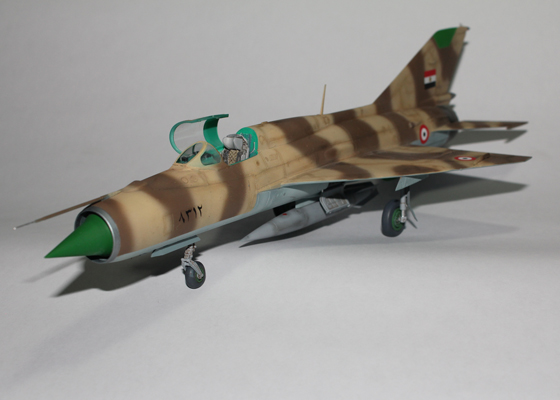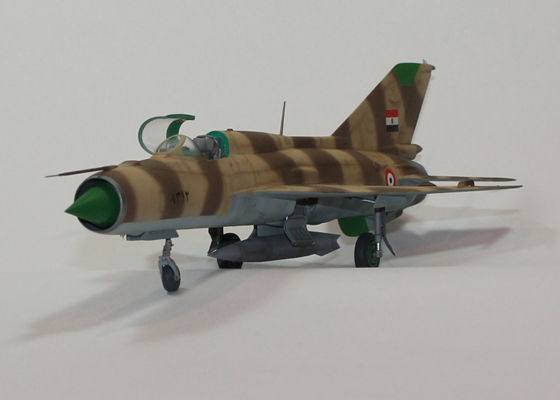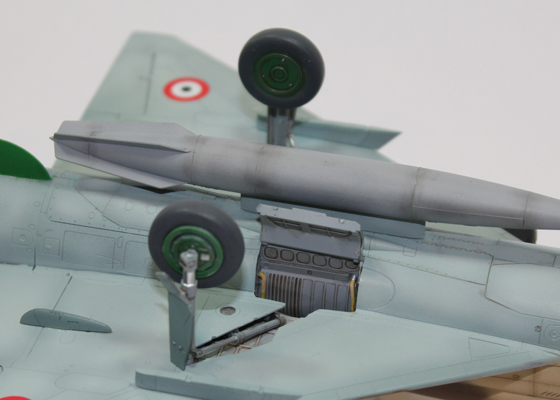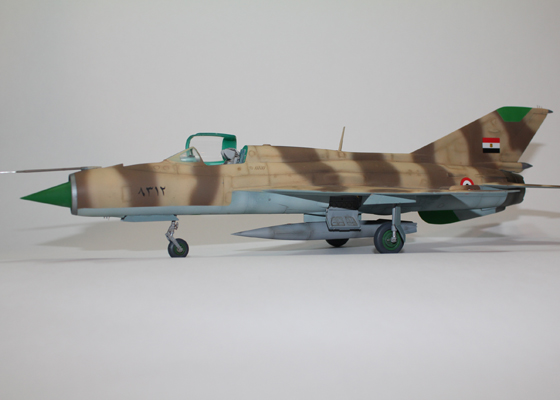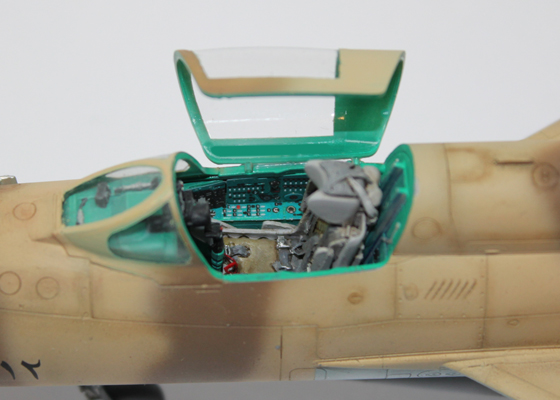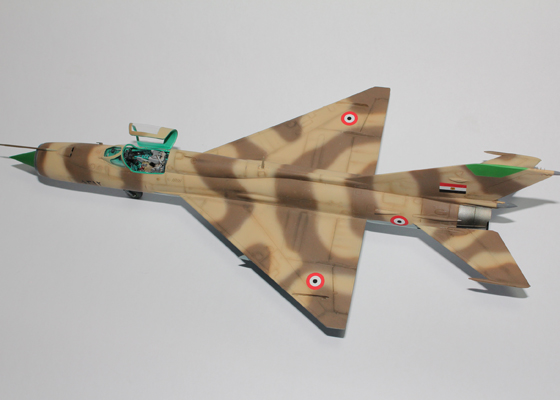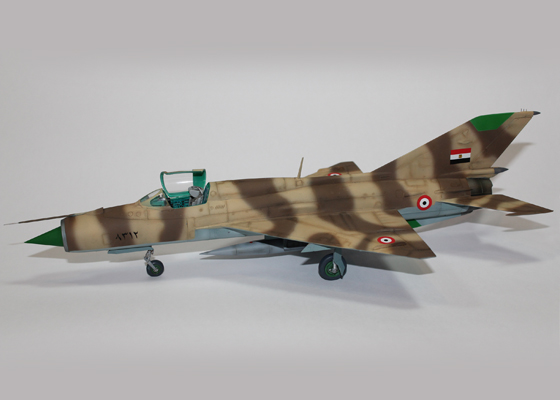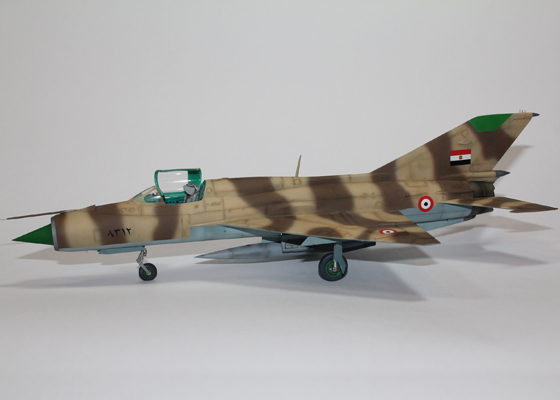
Eduard 1/48 MiG-21 PFM
By Randy Fields
Eduard has released a 1/48 scale model of the MiG-21PFM. Designed by Mikoyan-Gurevich, the MiG-21 (NATO code name Fishbed) holds the record as the most-produced supersonic jet aircraft and the most-produced combat aircraft since the Korean War. Over 50 countries on four continents have flown the MiG-21 and North Korea and India still have many MIG-21s still in service. History has shown the MIG-21 had the longest production run of any modern combat aircraft with over 10,600 MIG-21s built in the USSR.
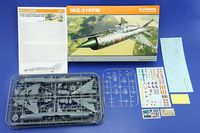 Eduard's 1/48 scale model is a MiG-21PFM (PFM standing for P = Perekhvatchik or Interceptor, F = Forsirovannyy or Uprated and M = Modernizirovannyy or Modernised) contains 372 parts in medium grey plastic; 26 parts in clear; self-adhesive masks; two photo-etched frets (one colored); and markings for five different aircraft.
Eduard's 1/48 scale model is a MiG-21PFM (PFM standing for P = Perekhvatchik or Interceptor, F = Forsirovannyy or Uprated and M = Modernizirovannyy or Modernised) contains 372 parts in medium grey plastic; 26 parts in clear; self-adhesive masks; two photo-etched frets (one colored); and markings for five different aircraft.
The kit features recessed panel lines and excellent detail. I built my kit out-of-the- box. I found the instruction booklet exceptional providing detailed instructions. It also contains five full color profiles for the markings of your choice.
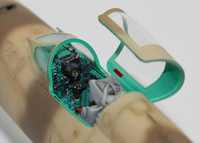 The cockpit is a model unto itself containing 55 parts. You have your choice of using decals for the instrument panel and the console panels or you can use the photo-etched color cockpit details included with the kit. I chose to use the photo-etched parts.
The cockpit is a model unto itself containing 55 parts. You have your choice of using decals for the instrument panel and the console panels or you can use the photo-etched color cockpit details included with the kit. I chose to use the photo-etched parts.
My main challenge building the cockpit was matching the blue/green interior color of the photo-etched instrument and side panels with the plastic interior. With a little trial and error, I managed to match the MiG-21 interior color. The completed cockpit and ejection seat are highly visible when displaying with the side-opening canopy.
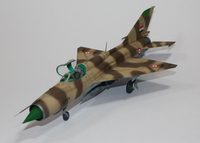 As I stated above the kit has excellent detail not only in the cockpit but extends to the landing gear bays, landing gear and the engine exhaust as well. A lot of this detail comes from the myriad of small parts, which adds to the building time and complexity of the model. Overall, the kit components including the small parts fit reasonably well making assembly straightforward. I found just a couple of seams requiring some minor filling with Mr. Surfacer. Do not forget to add some weight to the nose of your model. I added the weight inside part D-80 before gluing it to the right fuselage half.
As I stated above the kit has excellent detail not only in the cockpit but extends to the landing gear bays, landing gear and the engine exhaust as well. A lot of this detail comes from the myriad of small parts, which adds to the building time and complexity of the model. Overall, the kit components including the small parts fit reasonably well making assembly straightforward. I found just a couple of seams requiring some minor filling with Mr. Surfacer. Do not forget to add some weight to the nose of your model. I added the weight inside part D-80 before gluing it to the right fuselage half.
To add to the detail of the kit I decided to use the brass-etched details replacing the kit's molded pieces such as the wing fences and antennas. However, you will have to be careful not to knock off the delicate wing fences when applying decals and finishing the model.
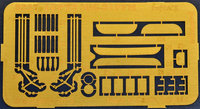
|
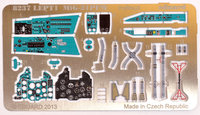
|
I chose to paint my MiG-21 as an Egyptian variant featured in the kit using Mr. Color paints and finishing with pastels to provide the harsh weathered look of a middle-east aircraft. The aircraft is one of the few MiG-21 PFMs flown after the Six Day War. Prior to this Arab-Israeli conflict, 235 MiG-21 variants were delivered to Egypt, but only about 10 survived the war.
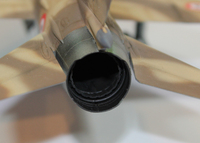 The self-adhesive masks were helpful when painting the canopy and green antennae panels prominently displayed on the aircraft. I painted the green panels first and then used the adhesive masks to cover the panels before applying the final paint scheme consisting of a 2-tone tan and brown upper surface and light blue lower surface.
The self-adhesive masks were helpful when painting the canopy and green antennae panels prominently displayed on the aircraft. I painted the green panels first and then used the adhesive masks to cover the panels before applying the final paint scheme consisting of a 2-tone tan and brown upper surface and light blue lower surface.
I found the most challenging aspect of building this kit is just the large number of parts especially the number of small parts that are needed to complete the model. This is not a beginner's kit but any modeler with a medium amount of experience will find Eduard's MiG-21PFM an enjoyable kit to build. I was quite satisfied with the look of my finished Egyptian MiG-21MPF.
Thanks to Eduard for providing all of the items for review.

